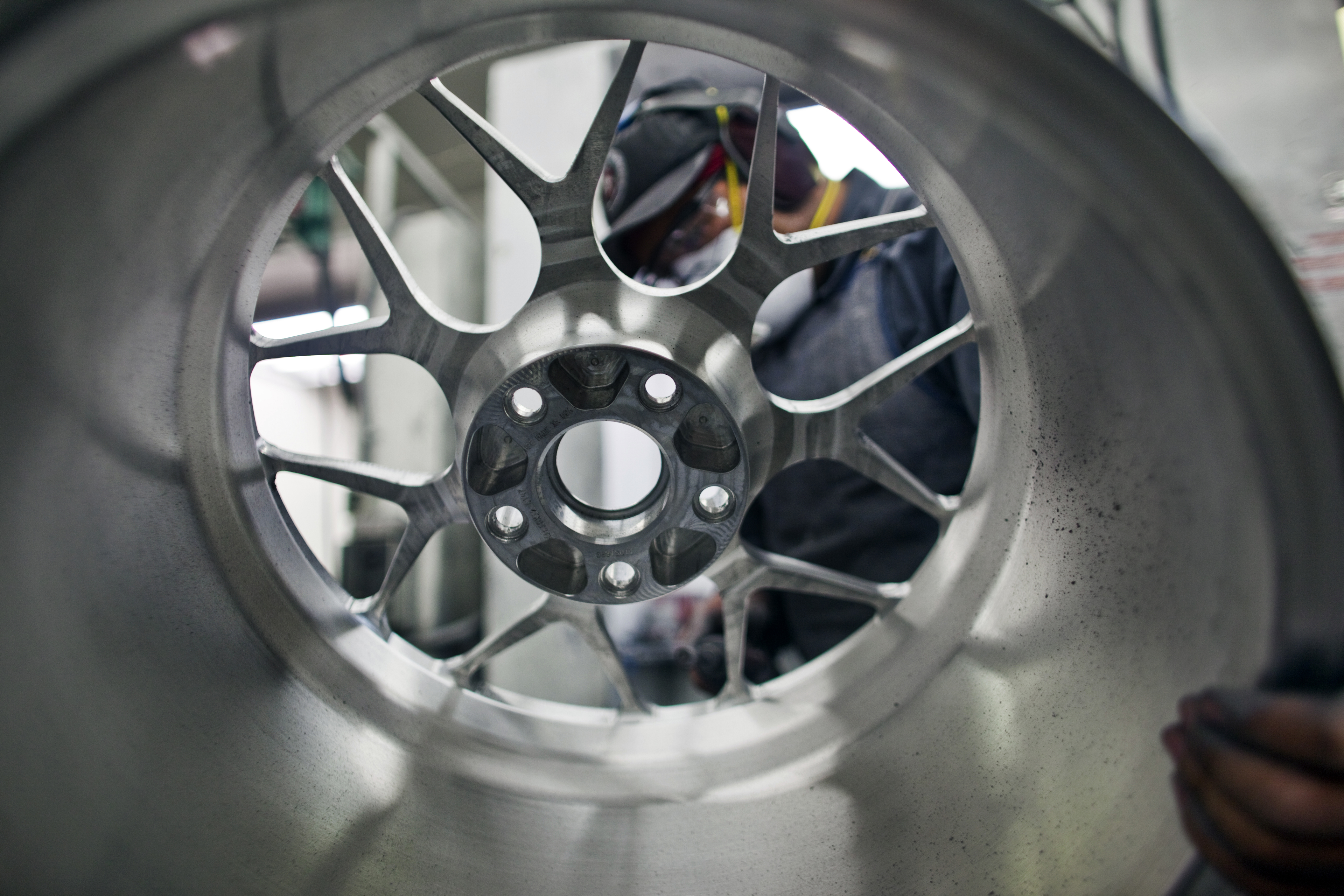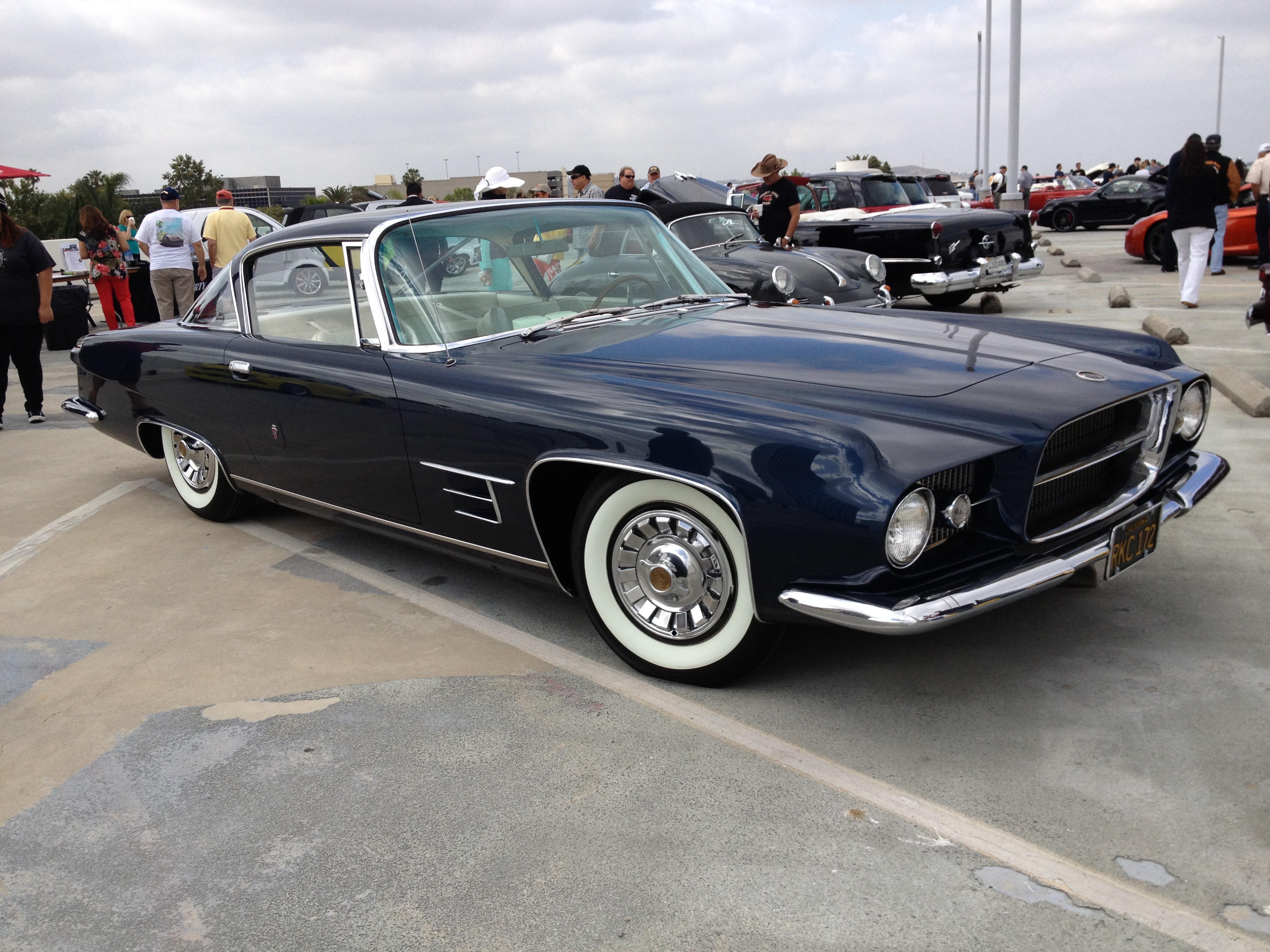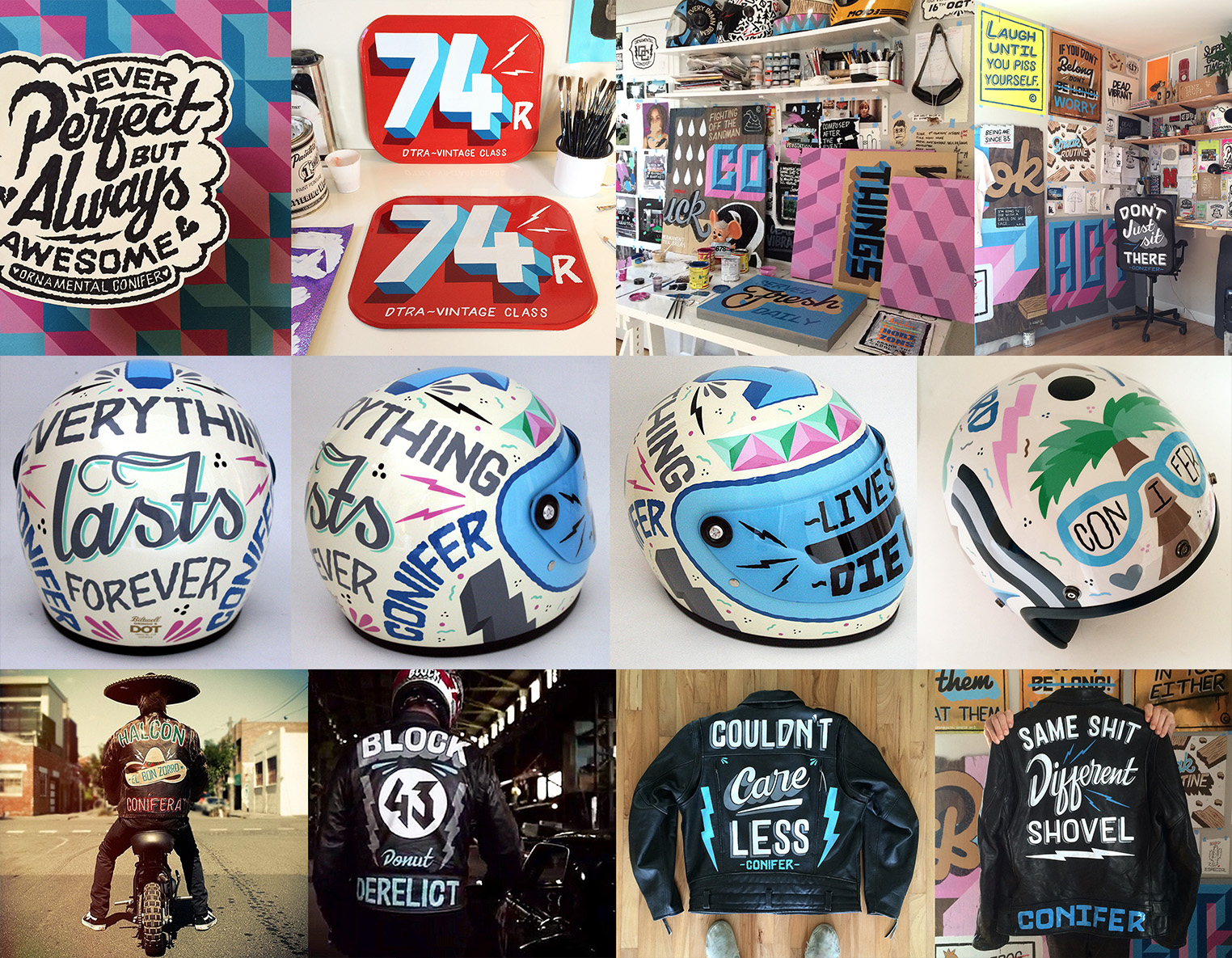Talking About Wheel Design with HRE
Changing a car’s wheels is one of the simplest and most effective modifications a person can do. Not only can the right set of wheels completely change the appearance of even the most mundane penalty box, but getting a set of well made lightweight wheels can also dramatically improve the performance of whatever you slap them on. That being said, buying the right wheels isn’t necessarily easy and that challenge doesn’t decrease when you begin to move upmarket. So what do you need to look for in a performance wheel? What separates quality from crap? How do wheels get designed? We asked Alan Peltier and Patrick Moran from HRE Performance Wheels to give us some insight into their process to help us find out.

When you talk about wheels for a street car, you can pretty much break them down into two categories. First you have wheels that are designed purely for aesthetics, these oftentimes find themselves being bolted onto luxury cars like S-Class Mercedes or Bentleys, or even luxury SUVs like Audi Q7’s or Porsche Cayennes. These types of wheels are primarily concerned first with looking good and secondly with being incredibly strong. Do you think that the cheap knockoff wheels that you have bolted to your six thousand pound SUV are going to survive hitting a huge pothole at 60 mph? Nope, we didn’t either.
Designing a wheel with a focus purely on looks and strength isn’t necessarily easy, but it is slightly simpler than designing the other type of wheel that we’re going to be looking at, the lightweight high-performance or motorsports-style wheel. These not only have to look awesome and be strong, but they also need to be incredibly light. Having lightweight wheels benefits the serious driver in several ways. First, a light wheel takes less energy to speed up or slow down and as such gives you advantages in acceleration and braking. Secondly, they allow the suspension to work more effectively due to a reduction in unsprung weight (aka weight that isn’t supported directly by the suspension of the vehicle). This means that your car’s suspension is better able to cope wth imperfections in the driving surface giving you a better ride and more predictable handling at the limit.

The next way to differentiate between wheel types is by classifying the type of material from which they’re made. The most affordable aluminum wheels are known as cast wheels. These are made by taking molten aluminum and pouring it into a wheel shaped mold. These are really easy to produce en masse which makes them cheaper, but the disadvantage is that they are often not nearly as strong as our next type of wheel, forged. Forged aluminum wheels start with a large bar of aluminum. The manufacturer then takes that bar and heats and presses it into a vaguely wheel like shape known as a forging. The barrel of the wheel is then spun out of the forging using a special machine. Once the barrel is flow-formed out, the wheel manufacturer then uses a series of CNC machines to mill out the design of the wheel. Forged wheels are much more labor and material intensive to make but the advantage is that a forged wheel is much stronger due to the uniform grain structure of its aluminum. Stronger aluminum means less is needed to achieve the same strength level of a cast wheel, hence lighter weight. Somewhere in the middle sits the cast “flow-formed” wheel. These wheels use a cast face to reduce cost and a flow-formed barrel for strength. These often represent a sweet spot for those enthusiasts who maybe can’t afford to drop $10k on a set of wheels but who need something that will stand up to abuse.

Next, you can differentiate wheels by construction type. Most wheels are made as one-piece, two-piece and three-piece designs. A one piece wheel is just like it sounds. The face of the wheel and the barrel of the wheel are one uniform piece of metal. These wheels are often very light but because each size requires a complete retooling, sizing can be somewhat limited. Next is the two piece wheel. The two piece wheel uses separate faces and barrels that are then welded or bolted together. The advantage of this is a wider selection of sizes over one-piece wheels while typically being significantly cheaper than three-piece wheels. Three piece wheels use separate rims, faces and barrels that are joined by many screws. These wheels are typically very expensive and heavier than other types of wheels but they offer an unparalleled variety of fitments.

While the basics of wheel design are simple enough that most companies are able to turn out a product that’s at least mostly round and probably ok for the average driver on a normal car, designing a wheel for a very high performance vehicle like a Porsche 911 GT3 or a Ferrari 458 means taking into account some incredibly complex sets of data. Before a tool ever touches metal, companies like HRE put their designs through a process known as Finite Element Analysis or FEA. Essentially, FEA is a computer driven analysis tool that breaks a complex model down into many tiny finite elements and solves the fundamental problem of F=Kx. F represents the forces applied to the wheel model. K is the model stiffness and x are the displacements. FEA solves for the displacements of each element and aggregates them together to show you the stresses and strains in your design under that particular loading condition. Basically it tells you how strong your design is and from that you can decide how best to optimize it for the best strength to weight ratio.
Still with us? Good. FEA is an incredibly useful tool that helps HRE create a fully optimized wheel for pretty much any application. FEA also opens up the possibility for testing new and interesting techniques for creating a lighter, stronger wheel. Techniques such as HRE’s unique lightening pockets. These cuts, made on the sides of individual spokes remove significant amounts of material and allow the resulting I-beam shape remains incredibly strong and resistant to loading forces. It also has the fringe benefit of looking super sexy. Trust us. It is.
Most performance wheels are made from aluminum, this is pretty widely known, but not all aluminum alloys are created equal. Choosing the right kind of aluminum for a given application is absolutely critical to the success of the design. The most common type of aluminum used in wheels, particularly by HRE, is 6061-T6. Other materials used in wheel design, albeit much less commonly, include magnesium which is often found in very expensive racing wheels and more recently carbon fiber. Magnesium is used because it’s even lighter than aluminum, but its drawbacks include its corrosion resistance and cost. Carbon wheels are even lighter than magnesium and they’re incredibly strong, but some types of carbon fiber and resin can degrade in UV light over time and they are incredibly expensive. Currently only two manufacturers offer vehicles with carbon wheels from stock: Koenigsegg and Ford (on their GT350R Mustang).

So, let’s say that you have your shiny new GT3 RS sitting in your driveway but the stock wheels aren’t really setting your heart ablaze. You decide that since you just spent a couple hundred grand on the car, it really won’t kill you to blow some more coin on a set of wheels. You look around online and you find a set that look perfect. They’re forged, they’re three piece so you know they’ll fit perfectly and they’re even made in the USA. You decide to pull the trigger. A few weeks and $12,000 later, four big beautiful boxes show up at your tire shop. You have everything mounted and balanced and the car looks amazing. So amazing that you feel the need to show it off at the track. It’s a GT3 RS, it needs to be on track, right? You take it out and immediately you dip a wheel off track, the wheel cracks, the tire suddenly deflates and you’re pitched off into the infield. Your wife and kids go to Disneyworld with the insurance money. What happened? These were expensive wheels! Don’t they have some kind of safety certification? The short answer is NO.

The US currently has no real safety certification process for automotive wheels. So, this means that anyone with money and a CAD program can make a set of wheels. Democratization is a good thing in many fields, lowering the bar to entry etc., but not when it comes to wheels. Cost is also no great indicator of quality. There are tons of things that cost an arm and a leg but are total crap. Aston Martin Lagonda anyone? Hublot Big Bang maybe? A house designed by Frank Gehry? The truth is that most companies making and selling wheels in the US, while probably well-meaning, are selling wheels that won’t hold up to the rigors of track use or even spirited driving in a high powered car.
One country that has a very, very serious safety certification program is Germany. Their TÜV certification process is one of the most stringent anywhere. In Germany, if you’re going to modify your car, odds are that the modification must be TÜV approved or you’re not going to be able to register your car for the road. With normal cars often seeing triple-digit speeds on a regular basis, having safe products on cars becomes an imperative. The United States, meanwhile, is the wild west. HRE designs and builds all of their wheels to meet the TÜV requirements and many of their designs have received the full certification and can be sold in Germany. The process is so stringent that TÜV sends inspectors to the HRE facility on a bi-yearly basis to inspect their manufacturing processes to insure that the wheels they receive for testing are representative of the wheels being sold to the general public.

If you (like us) aren’t necessarily in the market for a $10,000 set of wheels but you want something relatively strong and light, then Alan Peltier, president of HRE has some advice for you: “For most people looking for a good affordable wheel, looking at the well-known brands from Germany or Japan will generally net you something that is going to stand up to what you throw at it. For something that is a cut above those, people can check out our FlowForm line. I will say that it doesn’t pay to skimp on wheels.”
The aesthetics of a wheel design are, of course, totally subjective. Some people are looking for giant, chrome wheels with dragon heads for spokes. Most people aren’t. Most of HRE’s customers are looking for a wheel that seems to have been designed with a purpose. HRE’s designers often take their inspiration for wheel designs from the cars for which they’re intended. This means that the more luxury focused wheels have a completely different feel than the wheels intended for use on Lamborghinis and Ferraris.

“For HRE we’re a performance wheel company so all of our wheels need to be strong, stiff and as lightweight as possible. Form has to follow function. The focus on performance is most acute with our motorsport products but is present in all of our designs,” says Peltier. When asked about his favorite designs from HRE’s past he had a tough time narrowing it down, “HRE has had many iconic wheels over the years, the 540, the P40, the P101. All of these are fantastic and there have been many others over the years. I personally prefer wheels that are more purposeful, so the motorsport RC103 that is clean, strong and lightweight tends to be the style I prefer, but these more purposeful wheels are not our biggest sellers. We all have different tastes so that is why we offer so many choices, from purposeful RC100s to the very stylistic Series S2.”

Designing anything automotive offers a whole host of unique challenges because each component will be expected to perform under a wide variety of situations. Designing wheels is, as we’ve seen, more complicated still. Taking into account all of the math and science that go into designing a wheel properly as well as trying to make it aesthetically pleasing, it’s no wonder that wheel companies tend to come and go. Companies like HRE stick around because of their unwillingness to dilute their process, to concede on issues of quality or style, and their commitment to innovation in both materials and design. It doesn’t matter if you drive a Ford Fiesta or a Ferrari LaFerrari, if you’re like us you probably treat the modification of your car with the same seriousness as someone choosing the name of their first child. Before you spend your hard-earned money on some wheels, hopefully you’ll take the time to educate yourself so you don’t buy crap.






